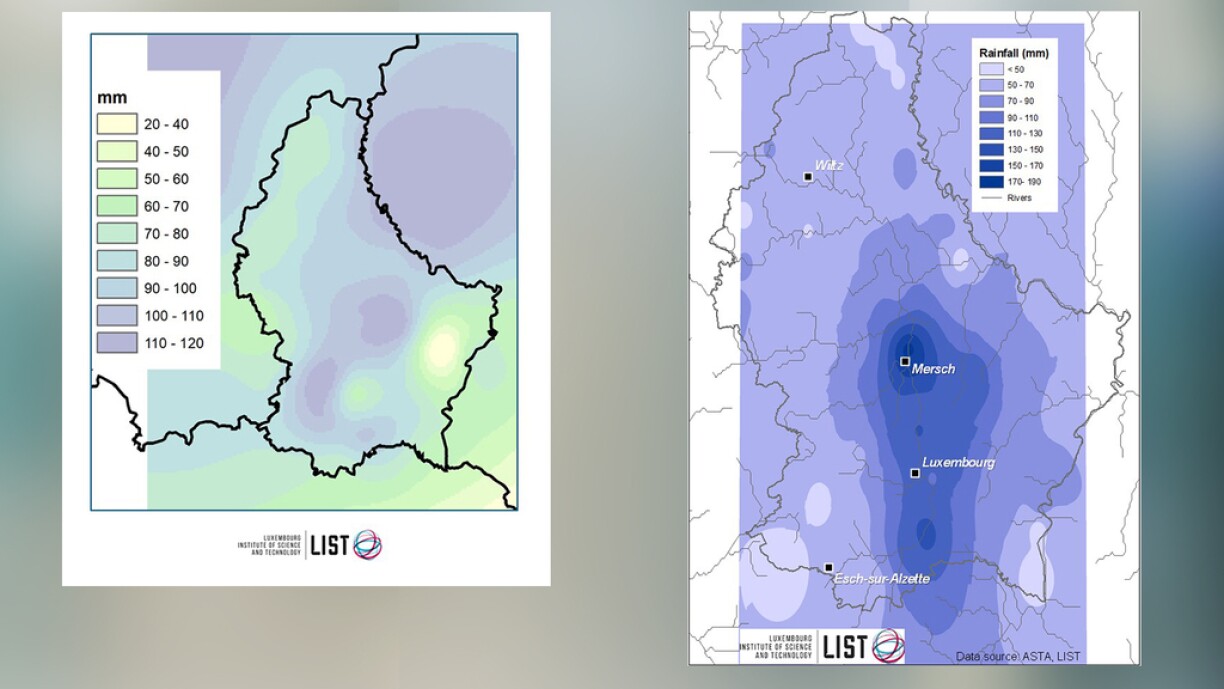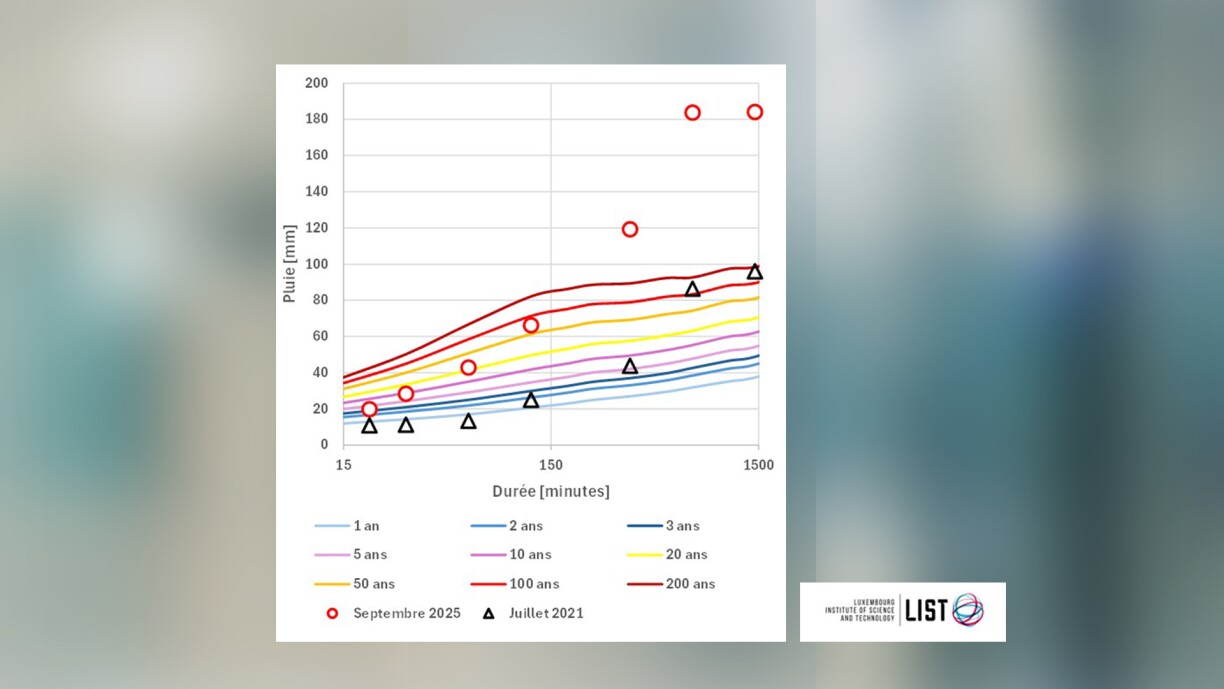
Following heavy rainfall earlier this week, hydrologist Laurent Pfister of the Luxembourg Institute of Science and Technology (LIST) stated that the country “got off lightly,” offering initial analysis of the event and its impacts in an interview with our colleagues from RTL.lu.
Significant rain fell across parts of the country during the night of 8-9 September, with researchers describing the intensity in some areas as “exceptional”. The Mersch region, in particular, recorded values that far exceed any previous rainfall data.

“For us, these are the days we head out,” said Pfister, whose teams were quickly deployed to monitor river and stream runoff. He explained that such rare events are “extremely valuable for research.”
According to Pfister, this week’s weather event is not directly comparable to the severe flooding that occurred in July 2021.
“The conditions were completely different,” he explained. Pfister noted that in 2021, prolonged heavy rain in the preceding days had left the ground fully saturated: “This time that wasn’t the case, and that meant the consequences weren’t as bad as they could have been.”
The distribution of the precipitation was a key factor.

Pfister stated that the heavy rain fell primarily over the Alzette valley itself. Since the smaller tributaries and streams that typically contribute to major flood waves were less affected, the Alzette river experienced a less severe impact.
Ongoing and completed river restoration projects also played a significant role in mitigating the flooding’s impact.
“River restoration is very important because it gives the river space to expand again,” Pfister explained, “This allows some of the water to be temporarily stored and then drain away slowly.”
This process prevents water from concentrating too quickly and causing greater damage. However, Pfister noted that “with intensities like yesterday’s, every measure eventually reaches its limits.”
For LIST, collecting and analysing such data is crucial work, performed partly on behalf of the Water Management Authority. Pfister stressed that each flood is unique, shaped by distinct variables.
“Every event has its own characteristics: How much rain fell beforehand? On which part of the area did the rain fall? What is the geology underneath? Understanding this helps us to improve the models for forecasting.”
The context of climate change introduces further complexity. Pfister stated that the statistics for “return periods” – which measure how often a flood of a certain magnitude is likely to occur – are constantly shifting.
“A flood that had a 50-year return period 20 years ago might now occur every 30 years,” the researcher warned.
This evolution has profound consequences for infrastructure investment and flood protection planning, including decisions about where it is safe to build in the future.
For Pfister, the trend is clear: “We are seeing more and more events that are becoming typical.”
He concluded that in the coming years, society must prepare to be confronted with a “new normal.”